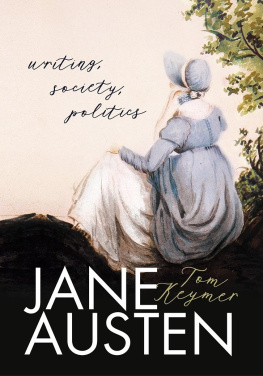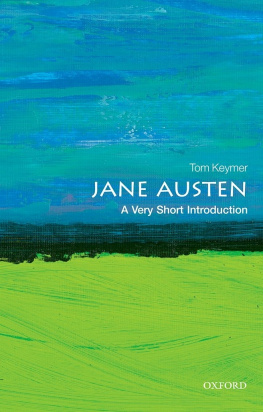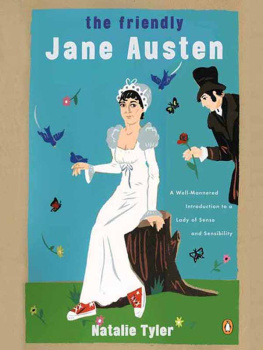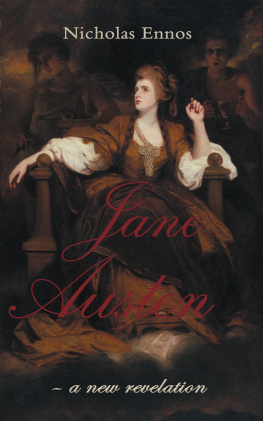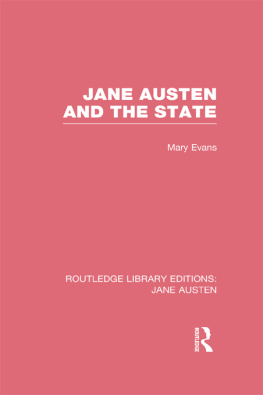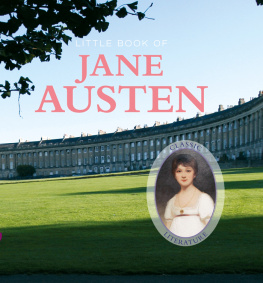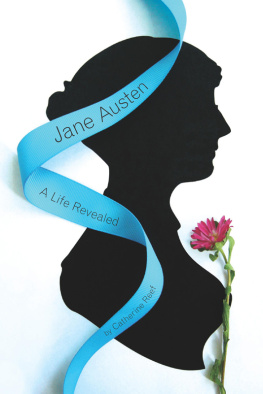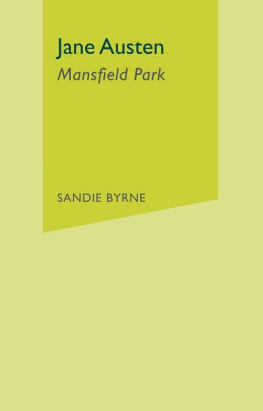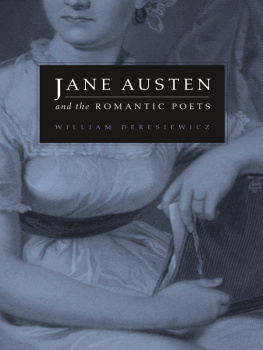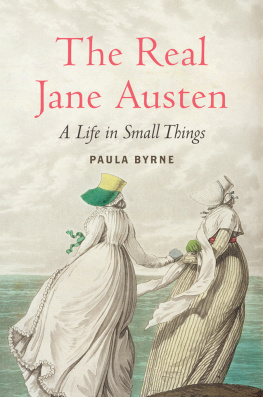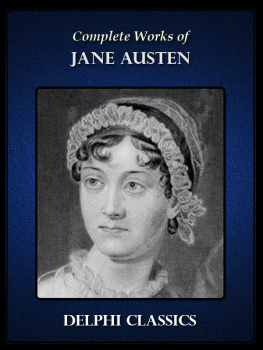Tom Keymer - Jane Austen: Writing, Society, Politics
Here you can read online Tom Keymer - Jane Austen: Writing, Society, Politics full text of the book (entire story) in english for free. Download pdf and epub, get meaning, cover and reviews about this ebook. year: 2020, publisher: OUP Oxford, genre: Art. Description of the work, (preface) as well as reviews are available. Best literature library LitArk.com created for fans of good reading and offers a wide selection of genres:
Romance novel
Science fiction
Adventure
Detective
Science
History
Home and family
Prose
Art
Politics
Computer
Non-fiction
Religion
Business
Children
Humor
Choose a favorite category and find really read worthwhile books. Enjoy immersion in the world of imagination, feel the emotions of the characters or learn something new for yourself, make an fascinating discovery.
- Book:Jane Austen: Writing, Society, Politics
- Author:
- Publisher:OUP Oxford
- Genre:
- Year:2020
- Rating:4 / 5
- Favourites:Add to favourites
- Your mark:
- 80
- 1
- 2
- 3
- 4
- 5
Jane Austen: Writing, Society, Politics: summary, description and annotation
We offer to read an annotation, description, summary or preface (depends on what the author of the book "Jane Austen: Writing, Society, Politics" wrote himself). If you haven't found the necessary information about the book — write in the comments, we will try to find it.
Jane Austen: Writing, Society, Politics — read online for free the complete book (whole text) full work
Below is the text of the book, divided by pages. System saving the place of the last page read, allows you to conveniently read the book "Jane Austen: Writing, Society, Politics" online for free, without having to search again every time where you left off. Put a bookmark, and you can go to the page where you finished reading at any time.
Font size:
Interval:
Bookmark:


Great Clarendon Street, Oxford, OX2 6DP, United Kingdom
Oxford University Press is a department of the University of Oxford. It furthers the Universitys objective of excellence in research, scholarship, and education by publishing worldwide. Oxford is a registered trade mark of Oxford University Press in the UK and in certain other countries
Tom Keymer 2020
The moral rights of the author have been asserted
First Edition published in 2020
Impression: 1
All rights reserved. No part of this publication may be reproduced, stored in a retrieval system, or transmitted, in any form or by any means, without the prior permission in writing of Oxford University Press, or as expressly permitted by law, by licence or under terms agreed with the appropriate reprographics rights organization. Enquiries concerning reproduction outside the scope of the above should be sent to the Rights Department, Oxford University Press, at the address above
You must not circulate this work in any other form and you must impose this same condition on any acquirer
Published in the United States of America by Oxford University Press
198 Madison Avenue, New York, NY 10016, United States of America
British Library Cataloguing in Publication Data
Data available
Library of Congress Control Number: 2020932227
ISBN 9780198861904
ebook ISBN 9780192606488
Printed in Great Britain by
Bell & Bain Ltd., Glasgow
Links to third party websites are provided by Oxford in good faith and for information only. Oxford disclaims any responsibility for the materials contained in any third party website referenced in this work.
for Pru
Warm thanks to my publishers Andrea Keegan, Jenny Nugee, and Luciana OFlaherty for their expert guidance throughout the preparation of this book, and to OUPs peer reviewers for the wise advice they contributed in the opening and closing stages. I did much of the writing during a visiting fellowship at All Souls College, Oxford, and I thank the Warden and Fellows for their generous hospitality. My thinking has been boosted over the years by fruitful conversations with many fine scholars of Jane Austen, among them Janine Barchas, Joe Bray, Linda Bree, Ed Copeland, Jenny Davidson, Jocelyn Harris, Freya Johnston, Heather King, Devoney Looser, Deidre Lynch, Juliet McMaster, Claude Rawson, Peter Sabor, Fiona Stafford, Kathryn Sutherland, Bharat Tandon, Karen Valihora, and Cindy Wall. Im grateful to the keen undergraduates who have made it such a pleasure to teach the Austen and Her Contemporaries course at the University of Toronto, to my outstanding teaching assistants Angela Du and Veronica Litt, and to the clever, sharp-eyed students who contributed research assistance and/or road-tested draft chapters: Dana Lew, Austin Long (who also created the index), Ryan Park, Sushani Singh, Philip Trotter, and Rachael Tu. I thank Bodleian Library Publishing and Cambridge University Press for permission to include passages adapted from my contributions to K. Sutherland (ed.), Jane Austen: Writer in the World (2017), and J. Todd (ed.), The Cambridge Companion to Pride and Prejudice (2013).
National Portrait Gallery, London (portrait sketch); Nick Fielding/Alamy Stock Photo (bank note)
Peter Smith for Jane Austens House Museum
British Library Board. All Rights Reserved/Bridgeman Images
Beinecke Rare Book & Manuscript Library, Yale University
Rijksmuseum, Amsterdam
Nabokov Papers by Vladimir Nabokov. Copyright 1950, Vladimir Nabokov, used by permission of The Wylie Agency (UK) Limited. Photo: The Henry W. and Albert A. Berg Collection of English and American Literature, The New York Public Library, Astor, Lenox and Tilden Foundations
Cincinnati Art Museum, Ohio, USA. Gift of Emilie L. Heine in memory of Mr & Mrs John Hauck/Bridgeman Images
By permission of the Provost and Scholars of Kings College, Cambridge
Private collection/Granger Historical Picture Archive/Alamy Stock Photo
Quotations from Jane Austens writings are taken from the following editions, all of which (except Deirdre Le Fayes edition of the letters) appear in the Oxford Worlds Classics series. References to the novels are supplied parenthetically in the text by volume and chapter number; letters are cited by date. For other sources quoted below, see the References section at the end of the volume.
There are two big draws for visitors to Chawton, the Hampshire village where Jane Austen lived and wrote during the years when, if we count the immediately posthumous works, her six major novels were first published. By far the grander of the two is Chawton House, an Elizabethan manor where the unmarried, impecunious Austen was a welcome though fairly low-status guest: not quite hapless Miss Bates when she visits the Highbury elite in Emma, but in terms of social hierarchy its not an irrelevant comparison. Chawton House was owned by Austens brother Edward Knight, a wealthy manwealthier than loaded, landed Mr Darcy in Pride and Prejudicewho had been adopted as an heir by rich cousins and mainly lived at Godmersham, Kent, on an even more desirable estate. The manor is now a charitable trust first established in the 1990s by Sandy Lerner, a serial entrepreneurCisco Systems, Urban Decay Cosmeticsand Austen devotee or Janeite (a term popularized by Kiplings 1924 story about cultish novel-readers during the First World War). Media personalities and bestselling authors sometimes show up, and celebrity actors with Austen roles in their back catalogues.
Then theres the beautiful if far more modest housea very snug little cottage, as Mrs Dashwood puts it with resignation in Sense and Sensibility
Font size:
Interval:
Bookmark:
Similar books «Jane Austen: Writing, Society, Politics»
Look at similar books to Jane Austen: Writing, Society, Politics. We have selected literature similar in name and meaning in the hope of providing readers with more options to find new, interesting, not yet read works.
Discussion, reviews of the book Jane Austen: Writing, Society, Politics and just readers' own opinions. Leave your comments, write what you think about the work, its meaning or the main characters. Specify what exactly you liked and what you didn't like, and why you think so.

